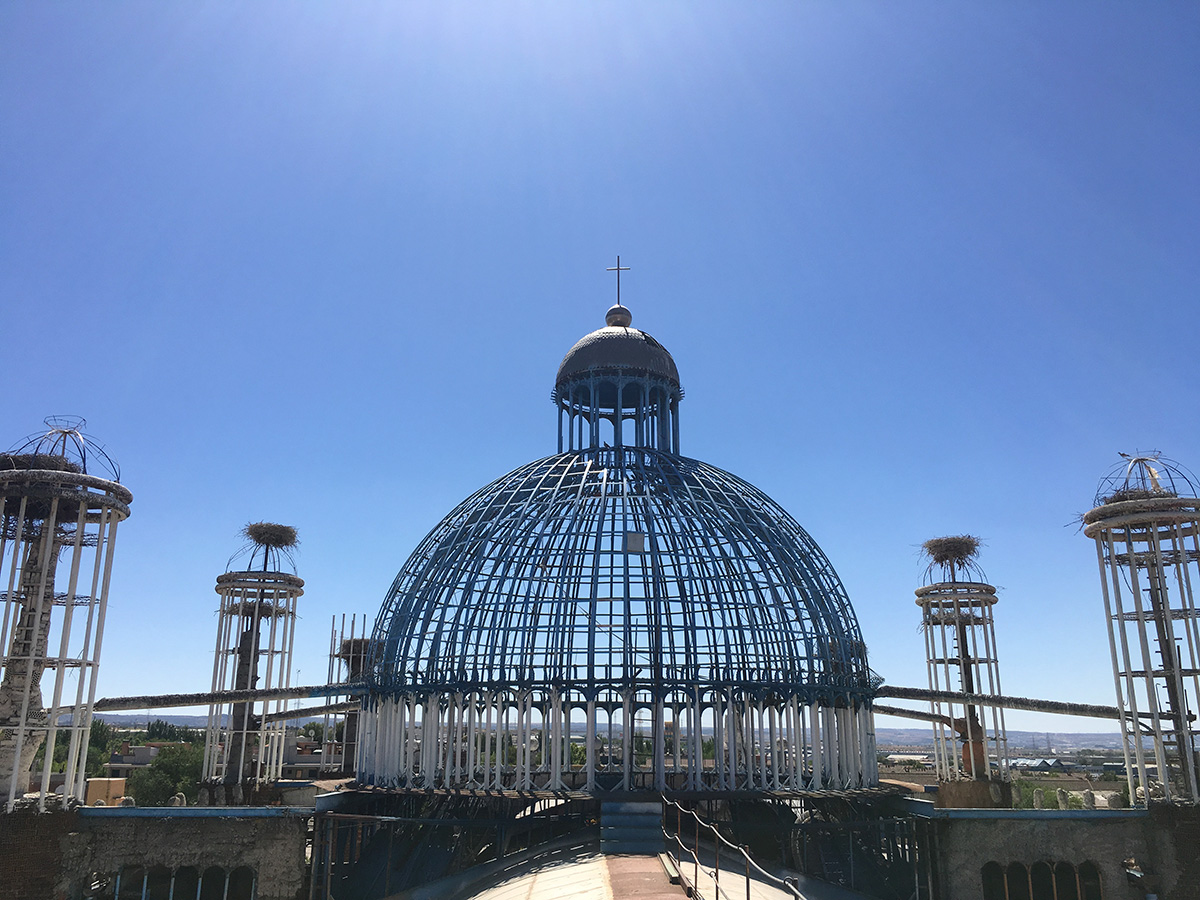When the spirit needs lifting, head for your local museum, where you’ll see everything from beautiful paintings to beautiful potties.
Spain is world famous for its museums. The Prado, the Reina Sofía, the Thyssen, the Picasso, the Guggenheim, the Pompidou Centre: the list is a cultural Who’s Who of museum excellence and attracts people from all over the world. But what’s on public view in some of Spain’s museums may surprise you.
Article by Vivion O’Kelly

Don Justo’s Cathedral
Perhaps the most surprising of all is not a museum at all, but a monument to the human spirit in the dodgy shape of a cathedral. It shouldn’t be there, and in a more bureaucratic society, might well have been razed to the ground by now. This is the cathedral built outside Madrid, in Mejorada del Campo, by a former monk named Justo Gallego, an obsessive visionary and amateur architect/builder who devoted his long life to the almost single-handed construction of (and here we pause, because it doesn’t have a name). The problem, apart from lacking necessary permits, is that the Madrid diocese, or any other in the world for that matter, does not need a second cathedral, so this building will likely become a kind of museum. Just take a look at the picture below.

A mishmash of architectural style, mostly built with recycled materials and without planning permission or support of any kind from the church or local authorities, don Justo’s one and only masterpiece survived his on-site death last year at the age of 96 due largely to fear of voter reaction to any decision to have it torn down. It has been officially inspected and its structure was found to be basically sound. Its future now appears secure in the hands of the NGO Mensajeros de la Paz.

Museum of Chamber Pots
From the sublime to the Museum of Chamber Pots (Museo del Orinal) in Ciudad Rodrigo, in the province of Salamanca. Many of us are wary of crackpot museums established to lure tourists with too much time on their hands, but this, despite the implication at the beginning of the last sentence, is not one of them. With 1,320 pieces, including spittoons, on exhibition from 27 countries, it is unique in the world and a genuine delight for those with an interest in common household items and their design throughout the centuries. Many of them, especially those made in ceramics, are true works of art. The oldest piece is an Islamic potty dating from the 13th century. Respect the “Do Not Touch” sign, because most of them have been used.

Andalucía’s odd museums
Andalucía is not short on museums, with Málaga City at the forefront. But head for the sticks to see something less haute, and almost every small town or village has something they call a museum. You could stay mainline and see the wonderful Bonsai Museum in Marbella, if small trees rock your whimsy, or you could visit the Cookie or Shortbread Museum (Museo del Mantecado) in Estepa, in the province of Seville. Or the Raisin Museum (Museo de la Pasa) in Almáchar, north-west of Málaga, or the Olive Museum (food is a big thing in Andalucía) in Baeza, in the province of Jaén, or the Ancient Toy Museum in Ayamonte, Huelva, or the Bandolero Museum in Ronda. Or if you’re genuinely bereft of a cultural experience, the Tattoo Museum in Torremolinos.

Classic Car and Fashion Museum
For a more serious hour or so of culture and fun, the magnificent Museo Automovilístico in Málaga City fits the bill. The name may be a mouthful, but the experience is a banquet, taking us from the stylish Winner of 1898, one of the very first carriages to have a motor, through the golden age of the 1920s, the sleek and fast cars of the 30s and 40s, the heavy gas-guzzlers of the 50s and 60s, the gull-wing delights of our own times and the extraordinary alternative energy designs of an imagined future. And best of all, it’s right on your doorstep.

Curiously, the museum also subtitles itself as a fashion museum, drawing attention on its website to the connection between haute couture and luxury cars. Here you can see Chanel, Dior, Givenchy, Balmain, Prada and many other great names, with pieces worn by the likes of Jacqueline Onassis, Peggy Guggenheim, Lady Gaga and – would you believe it – Mata Hari. One of the earliest pieces is a dress worn by the Empress Eugenia de Montijo, wife of Napoleon 111. Extravagant hats abound in this section too.
Municipal Museums
All large town and cities in Andalucia have their own municipal or provincial museums whose content is usually identifiable in the name: Museo de Bellas Artes, Museo Arqueológico, Museo de Arte Contemporáneo and so on, while a simple title like Museo de Cádiz, for example, will exhibit a mixed lot. They are often fascinating places to visit, and cost little or nothing to enter. In smaller towns, there is usually a local museum dedicated to whatever the area is known for, and this can range from foodstuffs or local produce to farm equipment or household items.
According to EU statistics, more than half the population of the continent do not visit a museum, historical monument, art gallery or archaeological site in any given year. And we all watch television. Attendance figures decline with age. Isn’t it high time more of us, especially here in Andalucía, made the effort to enjoy an experience that costs little and gives so much?



































































